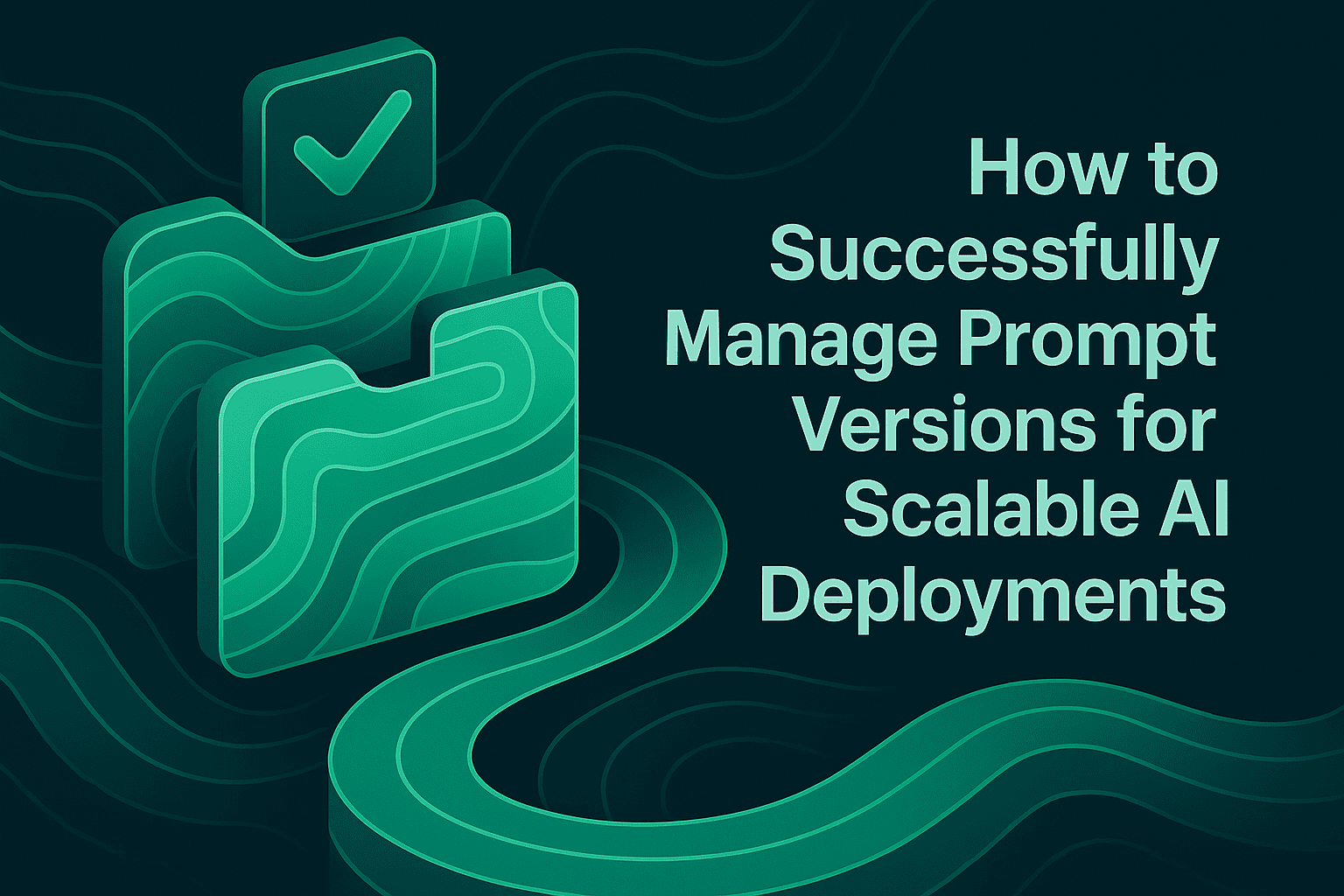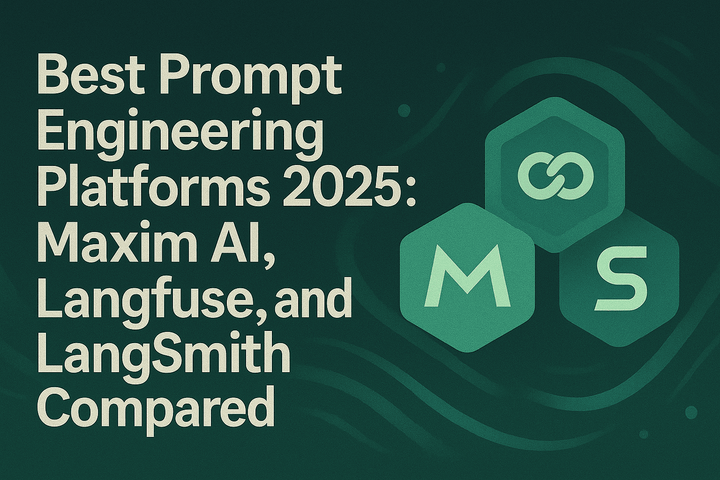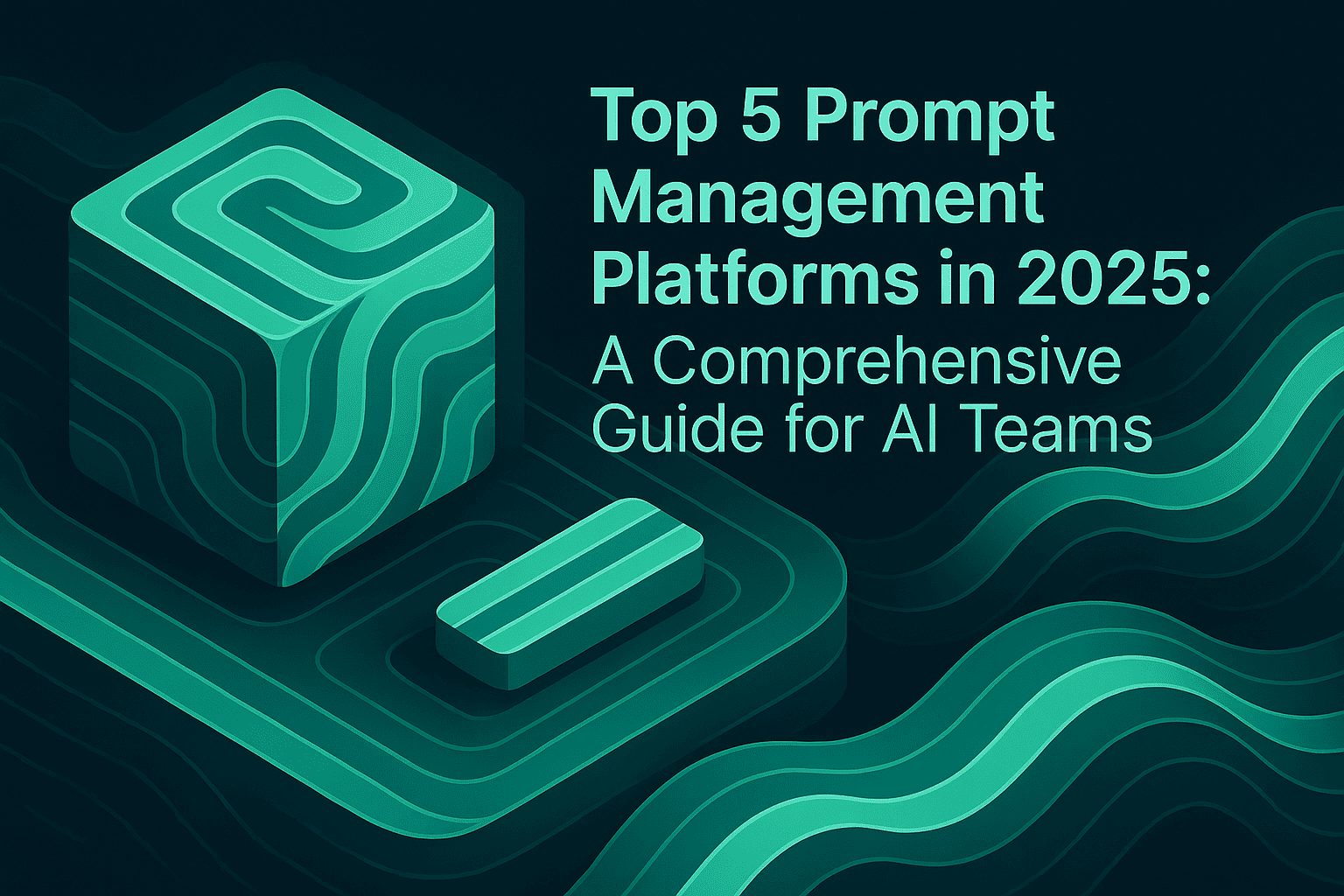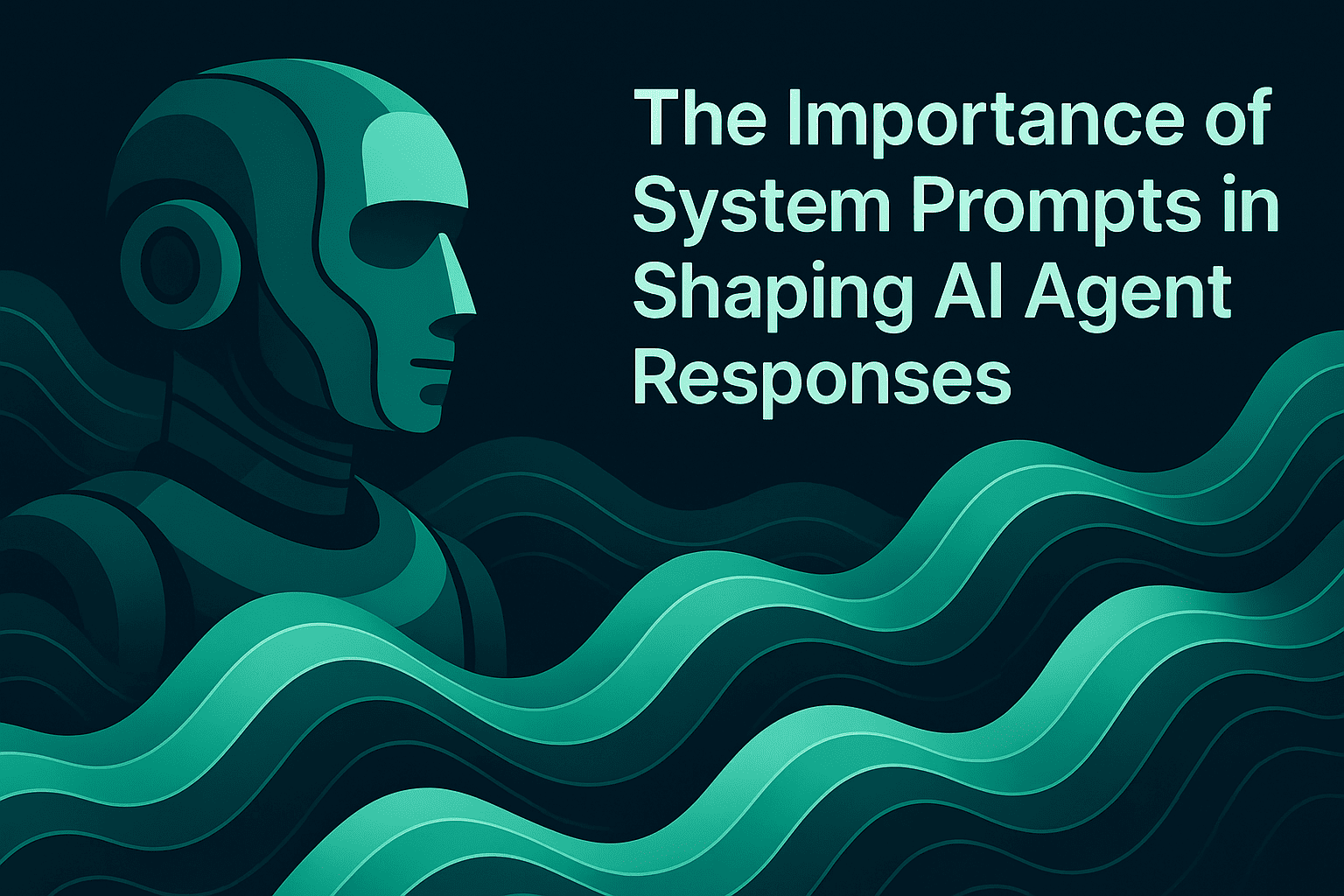How to Successfully Manage Prompt Versions for Scalable AI Deployments

TL;DR
Managing prompt versions effectively is critical for scaling AI applications reliably. Without systematic versioning, organizations face unpredictable outputs, difficult rollbacks, and deployment failures that contribute to the 95% of AI pilot programs that fail to deliver measurable impact. This guide explores proven strategies for prompt versioning, including semantic versioning systems, automated testing workflows, environment-based deployment, and continuous evaluation. Teams that implement robust prompt management practices can deploy AI systems 5x faster while maintaining quality and reliability across production environments.
The Critical Role of Prompt Versioning in AI System Reliability
Prompt versioning has evolved from an experimental practice to a foundational requirement for production AI systems. As organizations scale their AI applications, prompts have become the primary interface between user intent and model execution, yet many teams still treat them as configuration files rather than critical code artifacts.
Research from MIT reveals that 95% of generative AI pilot programs fail to achieve measurable business impact, with integration complexity cited by 64% of organizations as a major barrier. A significant contributor to these failures is the lack of systematic prompt management. When prompts are scattered across codebases, edited directly in production, or lack version control, even minor changes can cause cascading failures across AI systems.
Prompt versioning addresses these challenges by treating prompts with the same rigor as application code. Every modification to a prompt can affect output length, tone, accuracy, and compliance. For AI systems processing sensitive data or operating in regulated industries, untracked prompt changes introduce serious risks. A prompt that summarizes legal contracts, for example, could inadvertently remove key clauses or alter contractual meanings through seemingly minor wording adjustments.
Organizations implementing proper prompt management gain several critical capabilities. Version history captures what changed and why, enabling teams to understand the evolution of their prompts. The ability to roll back to previous versions provides a safety net when changes introduce unexpected behaviors. Documentation of modifications helps teams diagnose issues quickly and maintain compliance with audit requirements.
Beyond risk mitigation, systematic versioning enables teams to experiment confidently. Engineers can test multiple prompt variations, compare performance across versions, and deploy improvements without fear of breaking production systems. This experimental capability is essential as 57% of AI development teams identify managing AI hallucinations and prompt engineering as their primary technical challenge.
The distinction between organizations that succeed with AI deployments and those that struggle often comes down to infrastructure. Teams that implement version control, automated testing, and staged deployment for prompts ship reliable AI systems faster. Those that lack these practices find themselves spending more time managing prompts than improving AI features, often cutting into evenings and weekends to fix production issues that proper versioning would have prevented.
Building a Robust Prompt Versioning Infrastructure
Implementing effective prompt versioning requires more than storing prompts in files. Organizations need comprehensive infrastructure that supports the full lifecycle of prompt development, from initial creation through production deployment and ongoing optimization.
Semantic Versioning for Prompts
Adopting semantic versioning (X.Y.Z) for prompts provides clear communication about the nature and impact of changes. Major version increments (X) indicate significant prompt restructuring that may alter output format or behavior substantially. Minor version increments (Y) reflect prompt refinements that improve performance while maintaining backward compatibility. Patch increments (Z) address small fixes like typo corrections or clarifications that have minimal impact.
This versioning scheme helps teams understand at a glance whether a prompt change requires extensive testing or can be deployed with standard review. When a prompt moves from version 2.3.1 to 3.0.0, engineering teams know to conduct comprehensive evaluation before deployment. A change from 2.3.1 to 2.3.2 signals a low-risk update that still requires verification but poses minimal deployment risk.
Centralized Prompt Repositories
Prompts scattered across codebases, Slack threads, and spreadsheets create operational nightmares. Centralized repositories provide a single source of truth where all prompts are stored, versioned, and managed. This approach brings several advantages that directly impact team velocity and system reliability.
Teams can access prompt history without searching through code commits or documentation. Product managers can review and modify prompts without requiring engineering support for every change. Version control through Git or specialized prompt management platforms ensures every modification is tracked with author information, timestamps, and change descriptions.
Organizations using platforms like Maxim's Playground++ can organize and version prompts directly from the UI, enabling rapid iteration without code changes. This capability is particularly valuable when non-technical stakeholders need to refine prompts based on user feedback or domain expertise.
Environment-Based Deployment Strategy
Production prompt deployments should follow the same rigor as code deployments. Environment-based strategies create clear separation between development, staging, and production contexts, preventing untested changes from impacting users.
Development environments allow engineers and prompt engineers to experiment freely without risk. Staging environments provide production-like conditions for comprehensive testing before deployment. Production environments run only thoroughly vetted prompts that have passed evaluation criteria.
This staged approach enables teams to test prompts against realistic data, measure performance impacts, and identify edge cases before user exposure. When issues arise in staging, teams can address them without production incidents. This separation significantly reduces the deployment risk that causes 69% of AI projects to fail before reaching operational deployment.
Access Control and Approval Workflows
Not everyone on the team should have permission to deploy prompts to production. Implementing role-based access control creates clear divisions of responsibility. Prompt engineers focus on crafting effective prompts. Code infrastructure teams maintain the systems that serve those prompts. Deployment managers approve and execute production releases.
This separation of concerns, combined with pull request-style review workflows, ensures multiple eyes evaluate prompt changes before deployment. Reviewers can comment on proposed modifications, request adjustments, and approve changes only after thorough evaluation. This collaborative review process catches issues that individual contributors might miss and maintains consistency across prompt deployments.
Integrating Prompt Versioning with CI/CD Pipelines
Modern AI development requires treating prompts as first-class code artifacts within continuous integration and continuous deployment pipelines. This integration transforms prompt management from manual processes to automated workflows that ensure quality and consistency.
Automated Testing for Prompt Changes
Every prompt version should pass through automated evaluation before reaching production. These tests validate that prompts perform as expected across diverse scenarios and maintain quality standards. Automated evaluation frameworks run prompts against standardized test suites, measuring quality through AI evaluators, programmatic checks, and statistical analysis.
Test suites should cover common user inputs, edge cases, and scenarios that previously caused issues. When engineers modify a prompt, automated tests immediately provide feedback about performance changes. This rapid feedback loop enables teams to iterate quickly while maintaining confidence in prompt quality.
Organizations implementing continuous integration for prompts report significant improvements in deployment velocity. Teams can make changes confidently, knowing that automated gates will catch regressions before they reach users. This confidence eliminates the hesitation that slows prompt improvements and allows teams to focus on optimization rather than risk management.
Regression Testing and Performance Monitoring
Prompts that work well initially can degrade over time as underlying models update or usage patterns shift. Regression testing ensures new prompt versions maintain or improve performance relative to previous versions. By running prompts against historical datasets, teams can verify that changes deliver intended improvements without introducing unexpected behaviors.
Performance monitoring extends beyond functionality to encompass latency, cost, and user satisfaction metrics. Tracking these dimensions across prompt versions reveals optimization opportunities and helps teams understand the full impact of their changes. When version 2.5.0 reduces latency by 15% while maintaining output quality, teams gain valuable insights for future optimizations.
Maxim's observability suite enables teams to monitor real-time production logs and run periodic quality checks, ensuring AI applications remain reliable. This continuous monitoring catches drift, hallucinations, and performance degradation before they significantly impact users.
Deployment Strategies for Prompt Updates
Progressive deployment strategies minimize risk when releasing prompt changes. Canary deployments expose new prompt versions to a small subset of traffic initially, allowing teams to validate performance before full rollout. If the new version performs well, traffic gradually increases until all users receive the updated prompt. If issues emerge, teams can quickly roll back with minimal user impact.
Blue-green deployments maintain two identical production environments, allowing instant switching between prompt versions. This approach enables zero-downtime deployments and provides immediate fallback options if problems arise. Feature flags complement these strategies by allowing selective prompt version activation based on user segments, enabling controlled experimentation and gradual rollout.
These deployment patterns align with broader CI/CD best practices that prioritize reliability and rapid recovery. Organizations that implement progressive deployment for prompts reduce deployment risk while maintaining the velocity needed for competitive AI development.
Data Management and Evaluation Frameworks for Prompt Quality
Effective prompt versioning depends on robust data management and comprehensive evaluation frameworks. Without high-quality datasets and systematic assessment, teams cannot reliably improve prompt performance or validate that changes deliver intended outcomes.
Curating High-Quality Evaluation Datasets
Evaluation datasets form the foundation for assessing prompt performance. These datasets should represent the full spectrum of user inputs, including common queries, edge cases, and previously problematic scenarios. Organizations often struggle with dataset curation because production logs contain noise, sensitive information, and unrepresentative samples.
Maxim's Data Engine enables teams to curate and enrich multi-modal datasets easily, importing datasets with a few clicks and continuously evolving them from production data. This capability addresses the finding that 77% of organizations rate their data quality as average, poor, or very poor for AI readiness.
Effective dataset curation involves several key practices. Teams should filter production logs to identify representative samples across different user personas and use cases. Sensitive information must be removed or anonymized to ensure compliance with privacy regulations. Edge cases that exposed prompt weaknesses should be incorporated to prevent regression.
Human annotation and feedback enhance dataset quality by providing ground truth labels for evaluation. Teams can mark correct outputs, flag hallucinations, and rate response quality to create benchmarks for automated evaluation. This human-in-the-loop approach ensures evaluation criteria align with actual user expectations rather than purely automated metrics.
Implementing Comprehensive Evaluation Metrics
Prompt evaluation should measure multiple dimensions of performance, not just accuracy or completion rates. Comprehensive metrics capture the full picture of how prompts perform in production contexts.
Quality metrics assess output correctness, coherence, and relevance to user queries. These measurements can use deterministic rules, statistical analysis, or LLM-as-a-judge approaches. Flexi evals allow teams to configure evaluations with fine-grained flexibility, applying different criteria at session, trace, or span levels for multi-agent systems.
Performance metrics track latency, token consumption, and cost per interaction. These operational measurements help teams optimize efficiency without sacrificing quality. A prompt version that improves accuracy by 5% while doubling latency may not deliver net value in production.
User satisfaction indicators provide real-world validation that automated metrics cannot capture. Tracking completion rates, user feedback scores, and task success metrics reveals whether prompt changes translate to better user experiences. Organizations combining automated evaluation with user satisfaction measurements make more informed decisions about prompt deployments.
Compliance and safety metrics ensure prompts maintain appropriate boundaries. Evaluations should check for prompt injection vulnerabilities, inappropriate content generation, and bias in outputs. These safety measures become increasingly important as AI systems handle sensitive data or interact directly with customers.
Continuous Evaluation and Iterative Improvement
Prompt quality is not static. Models update, user behaviors evolve, and business requirements change. Continuous evaluation ensures prompts remain effective over time by periodically assessing performance against current datasets and criteria.
Automated evaluation pipelines run scheduled assessments, alerting teams when prompt performance degrades below thresholds. This proactive monitoring enables teams to address issues before they significantly impact users. When evaluation detects increased hallucination rates or declining user satisfaction, teams can investigate root causes and deploy corrective updates.
Feedback loops integrate user reactions and human evaluations into prompt refinement cycles. Production monitoring captures user corrections, abandoned sessions, and explicit feedback. This information flows back into evaluation datasets, creating a continuous improvement cycle that keeps prompts aligned with user needs.
Organizations implementing continuous evaluation report higher AI system reliability and user satisfaction. By treating prompt quality as an ongoing practice rather than a one-time task, teams maintain competitive advantages and avoid the degradation that often occurs in AI systems over time.
Cross-Functional Collaboration in Prompt Management
Successful prompt versioning extends beyond technical implementation to encompass organizational practices that enable cross-functional collaboration. AI development requires input from domain experts, product managers, engineers, and quality assurance teams. Effective prompt management systems facilitate this collaboration without creating bottlenecks or coordination overhead.
Enabling Non-Technical Stakeholders
Product managers and domain experts often have the best understanding of what prompts should accomplish, yet they frequently lack the technical skills to modify code directly. Prompt management platforms that provide visual editors and no-code interfaces empower these stakeholders to contribute meaningfully without depending entirely on engineering resources.
Organizations using Maxim's experimentation platform enable non-technical team members to iterate on prompts, compare performance across versions, and deploy changes through approval workflows. This capability dramatically accelerates iteration cycles because domain experts can test hypotheses directly rather than creating tickets and waiting for engineering implementation.
The impact of enabling non-technical collaboration is substantial. Companies report reducing prompt iteration time from weeks to days or even hours. ParentLab, for example, crafted personalized AI interactions 10x faster with 700 prompt revisions in 6 months, saving over 400 engineering hours by allowing non-technical teams to work independently.
Establishing Clear Ownership and Accountability
While enabling broad participation, organizations must maintain clear ownership for different aspects of prompt management. Ambiguous responsibility leads to coordination failures and quality issues. Defining roles explicitly prevents these problems.
Prompt engineers own the creation and refinement of prompts, focusing on effectiveness and quality. Infrastructure engineers maintain the systems that serve prompts, ensuring reliability and performance. Quality assurance teams validate changes through testing and evaluation. Deployment managers approve production releases, balancing velocity with risk management.
This division of responsibility, combined with collaborative tools, creates efficient workflows. Subject matter experts can propose prompt improvements. Engineers review technical implications. QA validates changes through automated and manual testing. Deployment managers ensure proper rollout procedures. Each group contributes specialized expertise without becoming bottlenecks for others.
Documentation and Knowledge Sharing
Comprehensive documentation ensures teams understand why prompts evolved in particular ways and what considerations influenced decisions. Each prompt version should include descriptive metadata explaining the change rationale, expected impact, and any special considerations for deployment.
Documentation extends beyond version history to encompass best practices, style guides, and lessons learned. Teams can capture insights about what prompt patterns work well for specific use cases, what phrasings improve model performance, and what approaches to avoid based on previous failures. This institutional knowledge accelerates onboarding for new team members and prevents repeated mistakes.
Regular knowledge-sharing sessions where teams review prompt performance, discuss challenges, and share optimization techniques strengthen organizational capabilities. These practices create learning cultures where insights flow freely and teams continuously improve their prompt engineering skills.
Advanced Practices for Enterprise-Scale Prompt Management
Organizations deploying AI at enterprise scale face additional complexity that requires advanced prompt management practices. Multi-tenant deployments, regulatory compliance, cost optimization, and security considerations add layers of sophistication to basic versioning approaches.
Managing Prompts Across Multiple Environments and Tenants
Enterprise AI systems often serve multiple customers or business units with different requirements. Prompt management must accommodate this complexity through multi-tenant architectures that isolate customer data while enabling shared infrastructure benefits.
Organizations can maintain base prompt templates that provide core functionality, then create customer-specific variations that incorporate specialized knowledge or comply with unique requirements. Version control for these hierarchical prompt structures requires careful planning to balance consistency with customization.
Environment management becomes more complex at enterprise scale. Development, staging, and production environments may exist for each customer or region. Bifrost, Maxim's AI gateway, provides unified interfaces and governance capabilities that simplify managing prompts across diverse deployments while maintaining appropriate isolation and security.
Compliance and Audit Requirements
Regulated industries face stringent requirements for AI system transparency and auditability. Prompt versioning provides the foundation for meeting these requirements by maintaining comprehensive records of what prompts were used, when they were deployed, who approved changes, and what evaluation results supported deployment decisions.
Audit trails should capture the complete lifecycle of each prompt version, including development history, review comments, test results, approval records, and deployment timestamps. When regulators or internal compliance teams request information about AI system behavior, these records provide the evidence needed to demonstrate appropriate oversight and quality controls.
Organizations with SOC 2 Type 2 compliance requirements can leverage platforms that provide enterprise-ready features including role-based access controls, audit logging, and data protection mechanisms. These capabilities ensure prompt management practices align with broader security and compliance frameworks.
Cost Optimization Through Prompt Engineering
Token consumption directly impacts AI system costs. Effective prompt engineering can reduce costs significantly while maintaining or improving output quality. Version control enables teams to measure cost impacts across prompt iterations and optimize accordingly.
Teams should track token consumption per interaction for each prompt version, comparing costs against performance metrics to identify optimization opportunities. Prompts that achieve similar quality with fewer tokens deliver better cost efficiency. A version that reduces token usage by 20% while maintaining quality saves substantial costs at scale.
Cost-aware prompt engineering involves several techniques. Teams can experiment with more concise phrasings, remove unnecessary context, and optimize prompt structure to minimize token requirements. Semantic caching through platforms like Bifrost further reduces costs by intelligently reusing responses to similar queries, decreasing redundant model calls.
Security Considerations and Prompt Injection Defense
AI systems face unique security threats, particularly prompt injection attacks where malicious inputs manipulate model behavior. Prompt versioning plays a role in security by enabling rapid response when vulnerabilities are discovered and facilitating systematic testing of defensive measures.
Security-focused evaluation should test prompts against known injection patterns, boundary conditions, and adversarial inputs. When vulnerabilities are identified, teams can develop mitigation strategies, test them against attack vectors, and deploy hardened prompt versions. Version control ensures these security improvements are tracked and can be replicated across different prompts.
Organizations should implement monitoring to detect potential injection attempts in production. When suspicious patterns emerge, security teams can analyze interaction logs, develop defenses, and push updated prompts that resist the attack patterns. This iterative security hardening becomes manageable through systematic versioning practices.
Conclusion
Managing prompt versions successfully requires treating prompts with the same rigor traditionally applied to application code. Organizations that implement systematic versioning, automated testing, environment-based deployment, and continuous evaluation position themselves to scale AI applications reliably and rapidly.
The challenges are substantial. Integration complexity, data quality issues, and coordination overhead create barriers that contribute to the high failure rate of AI initiatives. However, teams that invest in robust prompt management infrastructure overcome these obstacles and unlock significant competitive advantages.
Key practices include adopting semantic versioning schemes that communicate change impact clearly, maintaining centralized repositories that provide single sources of truth for prompts, implementing environment-based deployment strategies that prevent untested changes from reaching production, and establishing automated evaluation pipelines that validate prompt quality continuously.
Cross-functional collaboration amplifies these technical practices. Enabling non-technical stakeholders to participate in prompt development accelerates iteration cycles. Clear ownership and accountability prevent coordination failures. Comprehensive documentation and knowledge sharing strengthen organizational capabilities over time.
At enterprise scale, additional considerations around multi-tenant deployments, compliance requirements, cost optimization, and security must be integrated into prompt management practices. Organizations leveraging comprehensive platforms that address these needs ship AI applications faster and more reliably than those building custom solutions.
The teams succeeding with AI deployments in 2025 share common characteristics. They treat prompt engineering as a discipline requiring systematic processes and quality controls. They invest in infrastructure that supports the full prompt lifecycle from development through production monitoring. They foster cultures of collaboration where technical and non-technical team members contribute specialized expertise. They measure continuously and improve iteratively based on data rather than intuition.
Maxim AI provides the end-to-end platform these successful teams need, offering experimentation capabilities for prompt development, simulation and evaluation tools for quality assurance, observability features for production monitoring, and data management systems for continuous improvement. Teams using Maxim ship AI applications more than 5x faster while maintaining the quality and reliability that production deployments demand.
Ready to transform your prompt management practices? Schedule a demo to see how Maxim accelerates AI development, or sign up today to start building more reliable AI systems.


